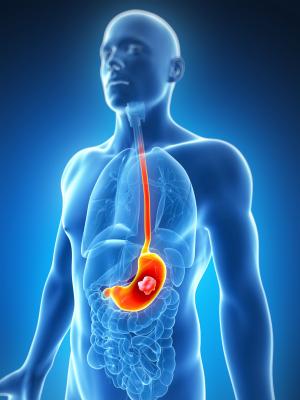A non-invasive tool for diagnosing cancer*

Gastric cancer – the second deadliest cancer worldwide – has a particularly high prevalence among Asian populations. Copyright : 123rf.com
In 2012, 8.2 million lives were lost to cancer around the world. This number is expected to double by 2030. However, many cancer deaths could be prevented if the disease was detected earlier.
To improve cancer detection, researchers in Singapore have developed a new method for diagnosing cancer non-invasively. It involves detecting micro-RNAs (miRNAs): small, non-coding RNA molecules that are important in the regulation of gene expression. Certain abnormalities that can occur in miRNAs have been implicated in various diseases, including cancer.
Research has shown that miRNA molecules are incredibly stable in blood, making them an excellent biomarker of disease. In fact, tumour-specific miRNAs have recently been reported. However, these molecules are difficult to detect because they are present at extremely low levels in the blood.
Researchers from the Agency for Science, Technology and Research (A*STAR) Bioprocessing Technology Institute and the National University of Singapore have developed an algorithm and miRNAdetection technology that is much more sensitive than those currently in use.
The technology, which is compatible with existing laboratory instruments, can measure hundreds of miRNAs from a few drops of blood with unparalleled precision, sensitivity and speed.
The researchers, who have since spun off MiRXES, a biotechnology startup, are now working with the Singapore Gastric Cancer Consortium and the A*STAR Diagnostic Development Hub to develop a test that detects gastric cancer before symptoms appear.
A clinical study involving thousands of patients is in the planning phases. If successful, it will be the first noninvasive screening test for gastric cancer: the second deadliest cancer worldwide and one with a particularly high prevalence among Asian populations.
For further information contact:
Professor Too Heng-Phon
Bioprocessing Technology Institute, Agency for Science,
Technology and Research (A*STAR) and Department of
Biochemistry, Yong Loo Lin School of Medicine
National University of Singapore
E-mail: bchtoohp@nus.edu.sg
Dr Lihan Zhou
Co-founder and CTO, MiRXES
E-mail: lihan_zhou@mirxes.com
*This article also appears in Asia Research News 2015 (p.19).
Media Contact
All latest news from the category: Medical Engineering
The development of medical equipment, products and technical procedures is characterized by high research and development costs in a variety of fields related to the study of human medicine.
innovations-report provides informative and stimulating reports and articles on topics ranging from imaging processes, cell and tissue techniques, optical techniques, implants, orthopedic aids, clinical and medical office equipment, dialysis systems and x-ray/radiation monitoring devices to endoscopy, ultrasound, surgical techniques, and dental materials.
Newest articles

Silicon Carbide Innovation Alliance to drive industrial-scale semiconductor work
Known for its ability to withstand extreme environments and high voltages, silicon carbide (SiC) is a semiconducting material made up of silicon and carbon atoms arranged into crystals that is…

New SPECT/CT technique shows impressive biomarker identification
…offers increased access for prostate cancer patients. A novel SPECT/CT acquisition method can accurately detect radiopharmaceutical biodistribution in a convenient manner for prostate cancer patients, opening the door for more…

How 3D printers can give robots a soft touch
Soft skin coverings and touch sensors have emerged as a promising feature for robots that are both safer and more intuitive for human interaction, but they are expensive and difficult…





















